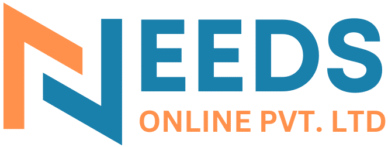By: Reena Karim
According to a 2024 HubSpot report, 70% of companies actively invest in content marketing, while 68% leverage paid advertising. Startups must weigh their limited resources and high ambitions carefully to choose a strategy that drives meaningful results.
For modern startup founders — balancing business, family, and personal brand building — this decision goes beyond clicks and conversions. It touches on how you want to be perceived, how you want to grow, and what kind of company you’re building for the long term. Choosing the right path can make the difference between steady traction and expensive dead ends.
This blog unpacks the pros, cons, and best use cases of both content marketing and paid ads. You’ll also learn how to track the right metrics, when to mix both methods, and how male startup founders can personalize their approach for maximum impact. Whether you’re running lean or ready to invest, by the end of this read, you’ll know exactly what fits your startup in 2025.
What Is Content Marketing?
Before diving into comparison, it’s important to clearly define what content marketing is and why it matters. This strategy is often misunderstood as “just blogging,” but it’s much broader—and potentially far more powerful.
Content marketing is all about creating and distributing valuable, relevant content to attract and engage a target audience. For startups, this usually includes blog posts, YouTube videos, podcasts, email newsletters, social media posts, and SEO-focused content that drives long-term traffic.
Rather than shouting for attention, content marketing earns it by offering solutions, advice, or insights that resonate with your ideal customers. It’s especially powerful for men who are building a personal brand alongside their business. When done right, content builds trust, authority, and an emotional connection with your audience.
It’s a long-term game, but it delivers compounding value if you stick with it.
What Is Paid Advertising?
Now let’s look at the other side of the coin—paid advertising. This approach delivers speed and scale, but it comes with its own set of rules and risks.
Paid advertising is a fast-track approach to gaining visibility and leads by paying to place your message in front of a targeted audience. This includes PPC (pay-per-click), display ads, paid social media promotions, YouTube ads, retargeting, and native ads.
If content marketing is like building a house brick by brick, paid advertising is like renting a penthouse with the view you want—instantly. But once you stop paying, the view disappears.
For startups with short-term goals like product launches, seasonal campaigns, or rapid lead generation, paid ads offer measurable ROI, precise targeting, and scalability. However, it does require ongoing budget allocation and optimization skills.
Pros and Cons of Content Marketing
Let’s break down the strengths and weaknesses of content marketing. It’s essential to understand where it excels and where it might fall short, especially when budgets and time are limited.
Pros:
- Builds Long-Term Organic Traffic
Content that ranks on search engines can drive traffic for months or even years. - Positions You as a Thought Leader
Creating insightful content gives your brand credibility and trust. - Cost-Effective Over Time
Once content is created and optimized, it keeps working without additional cost. - Supports SEO and Social Sharing
Great content earns backlinks and shares, boosting visibility organically.
Cons:
- Takes Time to See Results
You may need months before content starts driving significant traffic. - Requires Content Creation Skills
From writing and editing to design and promotion—content creation isn’t easy. - Hard to Scale Fast
You can’t just “turn up” organic traffic overnight. - Results Can Be Inconsistent
Not every blog or video will be a hit, so testing is key.
Pros and Cons of Paid Advertising
Paid advertising delivers immediate results—but that speed comes at a price. Let’s explore the pros and cons to see if it aligns with your startup’s growth strategy.
Pros:
- Quick Exposure and Fast Results
Your product or service gets visibility instantly. - Highly Targeted Reach
You can filter your audience by location, age, behavior, interests, and more. - Easy to Measure and Optimize
Platforms like Google and Facebook Ads offer real-time analytics. - Scalable
Increase your ad spend and potentially multiply your results.
Cons:
- Can Be Expensive
Especially in competitive niches where CPCs are high. - Requires Ongoing Investment
When the ads stop, so does the traffic. - Needs Expertise
Poorly targeted or written ads waste money. - Can Feel Less Authentic
People often skip or ignore ads—especially those that are overly salesy.
Comparing Content Marketing and Paid Ads Side-by-Side
This section lays out a direct comparison to help you visualize how both strategies perform in key areas like cost, timeline, and trust. Think of it as your decision-making cheat sheet.
Cost and Budget Management
Content requires more time investment upfront, while paid ads require a cash flow to sustain. Content is cheaper in the long run; ads deliver faster short-term ROI.
Timeline and ROI
Content may take 3–6 months to gain traction, but its ROI grows over time. Paid ads can show results in days or weeks, but ROI stops when you pause spending.
Target Audience Engagement
Content builds trust and ongoing relationships. Paid ads catch people at a moment in time but don’t always lead to long-term engagement.
Scalability
Paid ads are easier to scale by increasing spend. Content scales more slowly but can compound exponentially.
Trust and Credibility
Content feels more authentic. Readers choose to consume it. Ads are often seen as interruptions.
Performance Tracking
Both are measurable, but paid advertising offers more instant, detailed metrics.
Use Case Scenarios: When to Choose Each Strategy
Still unsure? Let’s look at real-world scenarios where content or paid ads shine. This helps align strategy with your startup’s phase and goals.
When to Choose Content Marketing
- You’re building a brand from scratch
- You want to educate your audience
- You sell complex or high-ticket products
- You’re time-rich but cash-strapped
- You want to grow organically and sustainably
When to Choose Paid Advertising
- You’re launching a new product
- You need leads quickly
- You’re validating a business idea
- You have a decent marketing budget
- You’re testing different audiences and offers
Hybrid Approach: Best of Both Worlds
Here’s the sweet spot: blending the long-term value of content with the short-term power of paid ads. It’s how modern startups punch above their weight.
The smartest startups use both strategies together. Use content to educate, build trust, and nurture leads. Then use paid ads to amplify that content or retarget those who engage.
For example, publish a blog post that explains your product in detail. Promote it via Facebook Ads. Then retarget readers with a special offer. This way, you blend authenticity with reach—and maximize conversions.
One B2B SaaS startup reported a 34% lower cost-per-lead by using paid ads to promote high-value content vs. standard direct-response ads.
Metrics That Matter: How to Measure Success
Understanding how to measure success is key—especially when resources are tight. These metrics help you optimize each channel smartly.
For Content Marketing:
- Organic traffic growth
- Bounce rate and time on page
- Conversion rate from content
- Number of backlinks
- Social media shares and comments
For Paid Ads:
- Click-through rate (CTR)
- Cost-per-click (CPC)
- Cost-per-acquisition (CPA)
- Return on Ad Spend (ROAS)
- Engagement metrics (video views, likes, etc.)
Tracking these metrics consistently helps refine your strategy and ensure ROI.
Special Considerations for Men in Startups
Men in startups often carry multiple responsibilities—from growth hacking to investor meetings. Choosing the right marketing approach should align with your values and available bandwidth.
Men often juggle multiple roles in startups—from founder to marketer to product developer. Content marketing allows you to express your personal values and expertise. For men building a brand around authenticity, it’s a strong fit.
On the other hand, if you’re more results-driven, logical, or operating with limited time, paid ads offer structured results and measurable performance.
Whichever route you choose, the key is to align your marketing with your mindset, goals, and available resources.
Conclusion: Choose Smart, Measure Often, Adapt Quickly
The marketing path you choose can fuel—or fail—your startup. Make that choice strategically and with purpose.
There’s no one-size-fits-all answer. Both content marketing and paid ads offer unique advantages and limitations. Your decision should depend on your budget, timeline, team skillset, and growth goals.
If you’re a startup founder looking to build lasting credibility and a loyal audience—start with content. If you need fast traction and lead flow, go with paid ads. If you want the best of both worlds—do both, strategically.
Remember: the best marketers don’t pick sides. They pick what works.
In 2025, the smartest startups will test, measure, and adapt in real time. And that’s exactly what will set them apart from the rest.


